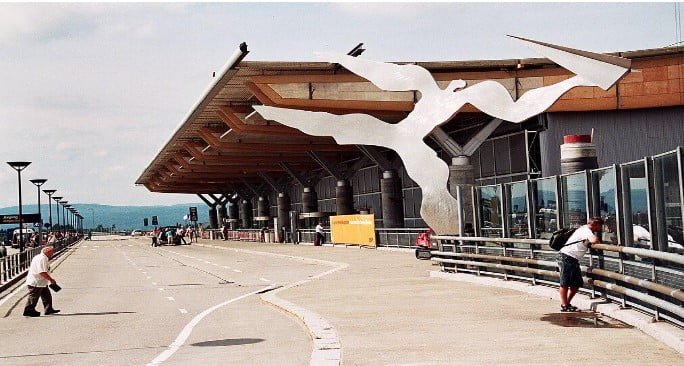The Oslo Airport Gardermoen (OSL) is one of the biggest airports in Norway. In fact, the only other airport larger than it in the country is the Kastrup Airport in Copenhagen. In addition to being big, it is also quite busy. In 2023, it was estimated that about 22.15 million passengers passed through this airport.
If you’re planning a trip to Norway anytime soon, then chances are that you may make use of this airport. You can visit leiebilguiden.no/norge/oslo-gardermoen-lufthavn/ to learn more it. You should also learn about the city and surrounding areas.
As you will expect with any airport, especially one this size and with the attendant traffic, there are certain services that must be present to increase passenger convenience. Top among this is an efficient car renter service. In this article, we will be providing you with a guide that will help you rent a car without stress.
Steps to Renting a Car at the Oslo Airport Gardermoen
The following is a step-by-step guide to successfully renting a car at this airport. This guide can also be employed for other airports the world.
Make Advance Reservations
One of the best ways to secure your car to avoid rush or unavailability at the last moment is to book in advance. If you can, secure the car you want to use on your trip before you get there.
In addition to ensuring that you get the car you need, you can also enjoy access to deals and discounts by pre-booking. This means that you enjoy the best of two worlds – increased affordability and assurance.
There are a few ways to do this. You either book directly on the company’s website (if they have one), or you go through a third-party site. Going with third-party sites have the advantage of offering you different providers and allowing you the luxury of comparison.
You can look at what each company offers – the types of cars, cost, terms, insurance etc. before making a commitment. This ensures that you get what you want or at least the best that you can afford.
Understand Insurance for Rental Cars
While it may be too much to expect you to have a complete understanding of the workings of car rental insurance, you should at least have a basic understanding and know what to look out for. You do not want to be saddled with liabilities that should have been covered by a suitable insurance cover.
Since insurance from third parties is required in Norway, your automobile rental will, at the very least, come with it. Known as the basic collision damage waiver (or CDW), this third-party insurance comes with an extra fee. This implies that you will pay your excess in the event of an accident. Before you book, find out how much this will cost from your rental car company. It may vary from a couple of hundred to thousands of euros.
By spending an extra daily amount, you can either partially or fully remove this excess; if you have a credit card for traveling, you may already be insured for this, so double-check. If your rental car is damaged, you can minimize or eliminate your expenses with the help of this additional insurance.
Pro Tip 1: Get comprehensive coverage on the rented vehicle to prevent unpleasant surprises should you or the vehicle be involved in a crash. Yes, you may be tempted to avoid the additional insurance so as to reduce the additional costs on your trip to Norway, this will not be a smart move. To avoid surprises when you get the vehicle from the rental company, you can add super or complete insurance when booking.
Pro Tip 2: A good number of credit card issuers, particularly those in the US, provide CDW (Collision Damage Waiver) coverage for rental car insurance. Before you travel, confirm that your provider covers Norway.
This is one very important reason why doing enough comparison is essential. This allows you to compare factors, including insurance policies so you can make the best choice.
Choose a Vehicle Slightly Bigger Than Your Needs
This is always a good approach, especially when you are traveling as a group. It’s often best to work with the assumption that you will be spending a lot of time in the car, especially if you’re going to Norway on vacation.
Chances are that you will spend time driving from one location to another, and you do not want to spend this time in discomfort. Consider leg room, number of sits and space for your bags and any other stuff you may need to lug around with you.
Consider Fuel Consumption and Cost
Cars have different fuel requirements, which include type and consumption ratings. Therefore, the car you choose will determine the type and quantity of fuel you will be requiring. This obviously impacts on how much you will be spending on fuel, which by implication, means a reduction in how much you will have free for other expenses.
Important Tip: You won’t have trouble finding petrol stations around Norway. The number of electric vehicles (EVs) in the country has recently increased. This has led many gas stations to switch to electric models with fewer fuel pumps. It is therefore advisable to confirm in advance that the service station you intend to use offer pumps before making any scheduled stops.
It’s important that you consider this point carefully when making your choice. Of course, this shouldn’t be at the detriment of other important functionality factors.
Other Important Tips to Note
Aside from choosing the car, there are other important things that you will need to note to ensure that your trip in Norway goes without any issues. Let’s quickly look at some of the most important tips:
Confirm That You Are Eligible to Rent a Vehicle
Applicants must be 19 years old to hire a vehicle in Norway. In addition, you must have owned your driver’s license for at least one year. Renters under of 25 are limited to lower automobile classes and may incur additional fees.
Use an Offline App for Navigation
Google Maps is a useful tool for travel planning in Norway. However, we discovered that network service can be very spotty in many places. This is usually the case in the Fjordlands.
Because of this, we advise planning your road journey across Norway with an offline application or specialized sat nav. We suggest OsmAnd for Android. You can use Maps.me for iOS for offline navigation.
Know the Tolled Roads
In Norway, many roadways use the Auto PASS automated toll collection system. You can click here to read a review of this automated collection system. You will undoubtedly travel through several of the nearly 200 toll gates that are dispersed around the nation. Even though it’s not a significant extra expense, you should account for it while planning your schedule to Norway.
A toll ticket is included with every rental car and is charged immediately to your profile account. Your rental vehicle provider will give you the total amount of toll fees upon the vehicle’s return, and the overall expense will be charged to the rental. It’s important to remember that entering Oslo and Trondheim requires paying a fee. The costs of entering both cities can pile up as there are several tolled portions, with each tolled segment costing 20-30 kroner.
Important Tip: The Ryfylke Tunnel toll, which charges 140 NOK each way, is among the most noticeable tolls that the majority of visitors will come across.
Familiarize Yourself With the Speed Limits and Fines
At the airport and its surroundings, certainly you won’t be driving like a NASCAR racer; the temptation to become one would set in when you encounter the open roads. As great as the temptation might be, avoid it. You might end up faulting the speed restrictions and having a fine (usually heavy) while driving a rental, is not something you want on your record. To ensure you don’t fault the speed limit, here are the speed limits in Norway, except the signpost says otherwise:
- Ordinary roads: a speed limit of 80 km per hour, which reduces to 50 kilometers per hour in urban zones.
- Built-up zones: 50 kilometers per hour.
- One hundred and ten kilometers per hour on motorways and certain dual carriageways.
- Residential neighborhoods: The speed limit may also be reduced to 30 kilometers per hour.
We hope you won’t have to deal with speeding charges in Norway. The country has some harsh penalties and fines for speeding. Therefore, you should never exceed the posted speed.
Once you exceed the limit, the fines increase gradually: 800 NOK or about 80 Euros and even as much as 10,600 NOK or about 1,000 Euros for speeds between 1 and 5 km/h over the limit. You may even be subject to a jail sentence.
For instance, you would spend a minimum of 18 days in jail if you were to drive at 150 km per hour on a Norwegian motorway. Given this, cruise control can be a great help when driving on the highways in Norway. Cruise control allows drivers to stick to the speed limits without worrying because of their relatively modest speed and strong enforcement.
Find Out About the Weather and Road Conditions Before You Go Out
Some of Europe’s best roads are found in Norway. Throughout the nation, there is an excellent and well-maintained road network. Yet, you must drive in accordance with the weather in any country. So, always find out how the weather is before you go out.
Be Ready for the Tunnels
There are more than 900 tunnels in Norway, and chances are good that you may go through a few of them while you are touring the nation. You might feel a little off-balance when you start driving through many of the tunnels, particularly in the Fjords area. It’s crucial to maintain speed when going through a dark underpass. These tunnels are often designated with signage, and any lowered speeds will be prominently displayed.
Conclusion
Hiring a rental car from the Gardermoen Airport is something many visitors coming to Norway through the airport will likely do. However, many visitors do not get the best experience using this service. To help with this, we took some time to provide you with tips on how to use these rental cars in Norway. With these tips, you can improve your experience while in Norway.



